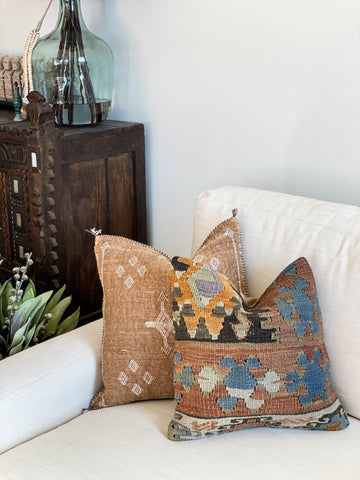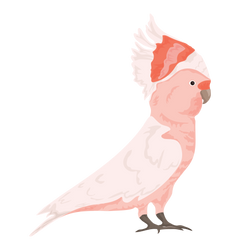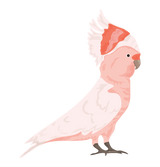ISSUE 29: FROM CACTUS TO SILK
 Have you ever heard of handwoven cactus silk? If not, you're in for a treat. This unique fabric is not only beautiful and durable but also sustainable and eco-friendly. It's made from the fibers of the Saharan aloe vera cactus, which is native to Morocco. The process of creating cactus silk is a labor-intensive art form that has been passed down for generations in Morocco. It involves hand harvesting, cleaning, and spinning the fibers before weaving them into luxurious fabric. The result is a soft, silky material that is perfect for home decor. In this article, we'll take a closer look at the fascinating process of handwoven cactus silk and explore the many benefits of using this sustainable and ethical fabric in your everyday life. So, sit back, relax, and let's dive into the world of cactus silk.
Have you ever heard of handwoven cactus silk? If not, you're in for a treat. This unique fabric is not only beautiful and durable but also sustainable and eco-friendly. It's made from the fibers of the Saharan aloe vera cactus, which is native to Morocco. The process of creating cactus silk is a labor-intensive art form that has been passed down for generations in Morocco. It involves hand harvesting, cleaning, and spinning the fibers before weaving them into luxurious fabric. The result is a soft, silky material that is perfect for home decor. In this article, we'll take a closer look at the fascinating process of handwoven cactus silk and explore the many benefits of using this sustainable and ethical fabric in your everyday life. So, sit back, relax, and let's dive into the world of cactus silk.Cactus silk, also known as Sabra silk, is a natural fiber that comes from the Saharan aloe vera cactus. The cactus is native to Morocco, where it is grown and harvested to create the luxurious fabric. The fibers of the cactus are soft, silky, and durable, making them ideal for a variety of uses.
Cactus silk is a sustainable and ethical alternative to traditional silk which is made from the cocoons of silkworms. The production process is entirely handcrafted, which means it has a lower environmental impact than mass-produced textiles. Additionally, the use of natural dyes further reduces the environmental impact of cactus silk production.
The process of creating cactus silk has been passed down for generations in Morocco. It's a traditional craft that has deep cultural significance in the country. In fact, cactus silk is often used in Moroccan weddings as a symbol of fertility and good luck. Historically, cactus silk was also used to create beautiful clothing and textiles for royalty and wealthy families.
 Today, cactus silk is still an important part of Moroccan culture and is used in a variety of ways. It's often woven into rugs, cushions, and other home decor items.
Today, cactus silk is still an important part of Moroccan culture and is used in a variety of ways. It's often woven into rugs, cushions, and other home decor items.
The production process of cactus silk
The production process of cactus silk is a labor-intensive art form that requires skilled artisans. The process begins with the harvesting of the cactus leaves, which are then left to dry in the sun. Once the leaves are dry, the thorns are removed, and the fibers are extracted. This is done by hand, using a technique known as carding, which involves combing the fibers to remove any impurities.
Once the fibers have been extracted, they are spun into thread using a drop spindle. This is also done by hand, and the thread is wound onto a wooden spindle. The thread is then ready to be woven into fabric.
The weaving process is also done by hand, using a traditional loom. The weaver will carefully thread the loom with the cactus silk thread and begin to weave the fabric. This is a slow and meticulous process, and it can take several weeks or even months to complete a single piece of cactus silk fabric.
 Traditional dyeing methods
Traditional dyeing methodsTraditionally, cactus silk was dyed using natural dyes made from plants, fruits, and vegetables. These dyes produce beautiful, muted colors that are characteristic of Moroccan textiles. Common colors include deep blues, rich reds, and earthy tones.
Today, synthetic dyes are often used to create brighter, more vibrant colors. However, many artisans still prefer to use natural dyes, as they are more sustainable and eco-friendly.
We advise dry cleaning with a reputable cleaner.
Conclusion
Cactus silk is a unique and beautiful fabric that is both sustainable and ethical. The production process is a labor-intensive art form that has been passed down for generations in Morocco. The result is a soft, silky material that is perfect for clothing, bedding, and home decor. Whether you're looking for a luxurious scarf or a beautiful rug, cactus silk is a great choice for those who value sustainability and ethical production.
Featured Cactus Silk Pillows (in order of article):
CORNFLOWER XI MOROCCAN SABRA CACTUS SILK PILLOW



